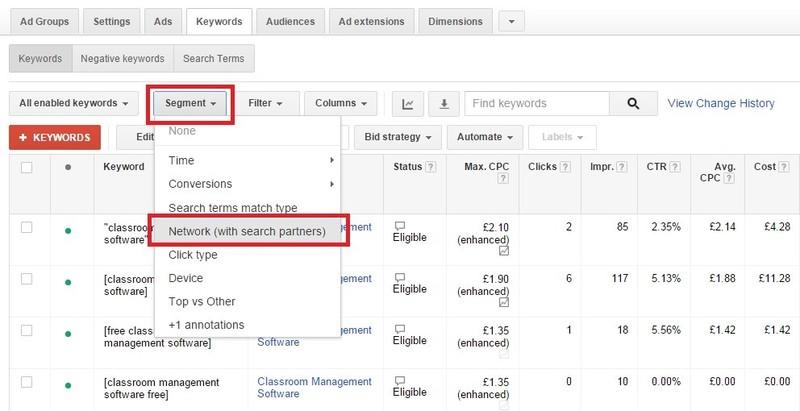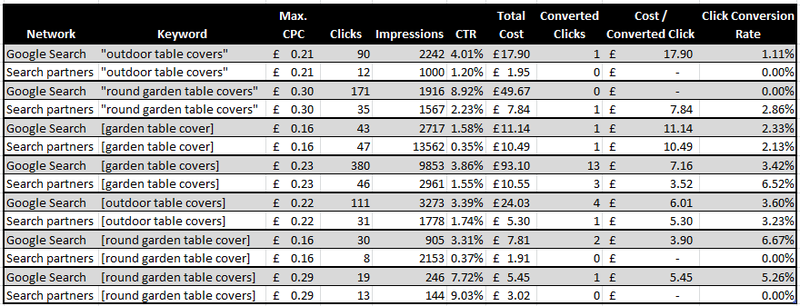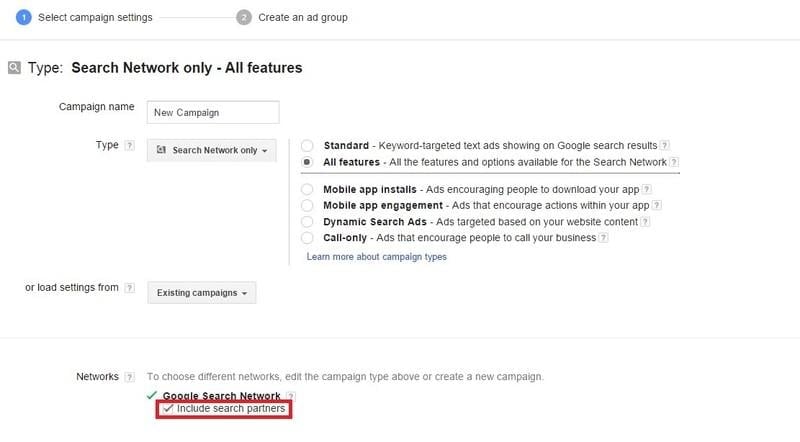When you set up a new search network campaign in Google Ads (formerly known as AdWords), you can choose whether or not to include search partners. In my experience of managing Google Ads campaigns, many of my clients have included search partners without knowing what they are, and without understanding the impact that they can have on their return on investment.
What Are Google Search Partners?
According to Google, search partners are websites that have partnered with Google to show ads. In return, these sites will receive a share of the advertising profit. Some sites within the search partner network use Google to power their site search functions, including online directories and smaller search engines such as Ask and, until recently, AOL. Google-owned sites such as Maps, Gmail and YouTube are also included, so expect your ads to appear here too.
If you’re running a Google Shopping campaign, ads for your products will also be displayed on these search partner sites.
In addition to only offering a vague description of search partners on their support site, Google doesn’t publish a list of their Search Partners. This lack of clarity and control of where ads will be shown leaves paid search marketers frustrated, and it casts a heavy doubt on whether or not to include them within search or shopping campaigns.
Where to Find Google Search Partner Data
If you’ve included search partners in your campaign, it’s important to continuously review to make sure these ads are not having a negative impact on your campaign’s overall performance.
AdWords can provide you with a performance breakdown of ads shown on Google search and on search partner sites. You can split this data out by using the Segment tool, and then selecting Network (with search partners) at both Ad Group and Campaign level:
As shown below I have applied a split by Google search and search partners at campaign level. As you can see, the ads shown on search partner sites are generating a far inferior CTR and click conversion rate, as well as a higher cost per converted click:
If your campaigns are generating poor conversion rates, splitting out search partner data is a good place to start. Sometimes your ads will appear on sites within the search partner network that will generate a low conversion rate, and as a result will skew your campaign’s overall performance.
As well as converted clicks, it’s also important to keep a close eye on the CTRs of ads shown on search partner sites. Google does state that ads shown on search partner sites will not affect your keyword Quality Score, which means that your average CPC will be unaffected by low search partner CTRs. But despite this, poor CTRs from search partner ads will still heavily impact your campaign’s overall performance by skewing your data.
To get a clear idea of how all of your campaigns and keywords are performing on Google Ads search partner sites, select the Keywords tab at Campaign level and download your Google Ads data into a .CSV file:
This will allow you to manipulate the data within Excel, providing you with a much clearer view of how each of your keywords are performing in Google search and on search partner sites.
How to Manage Search Partners
We pulled together and analyzed Google Ads campaign data from our clients’ accounts over the last 12 months. At first glance, the results painted a rather bleak picture of Google’s search partners.
So what are the key findings from this data? While Google search ads generate a far superior average CTR and click conversion rate, the average cost per click is 10p more. To some extent a lower average CPC isn’t too surprising, because at the end of the day, Google is trying to push the network to paid search marketers:
When you drill into your campaign keyword data using Excel, this is where Google search partners begin to show further limitations. First, AdWords will not allow you to make bid adjustments specifically for search partner ad placements, nor will it allow you to create search partner-only campaigns. It is possible that you may have keywords within your campaign that will be performing well on search partner sites. So if you decide to exclude search partners from an active campaign, you will risk losing profitable clicks and conversions from keywords that are performing well on these sites.
The most effective way to overcome these limitations is to pause keywords that are under-performing and add them into a new search network-only campaign that excludes Google search partners. That way you can retain your keywords that are performing well on search partner sites while excluding those that are generating a poor click conversion rate and a high cost per conversion.
Below I have taken keyword data from a search network campaign and the performance of its keywords in Google search and on Google search partner sites:
We can see from the data that there are keywords that have performed better on search partner sites. In particular [garden table covers] and “round garden table covers” generated higher click conversion rates while at a lower cost per converted click. Ideally you would retain keywords that are performing well on both Google search and on search partner sites.
On the other hand, there are keywords that have clearly underperformed on search partner sites. For example, [round garden table cover] generated a lower far inferior click-through rate and has failed to convert. For keywords that aren’t performing on search partner sites, I would recommend that you pause them in your existing campaign and move them across to a search network-only campaign that will exclude search partners.
If your campaigns are limited by budget and reluctant to increase the budget, this would be a good place to start for identifying savings. By taking a closer look at how your keywords are performing on search partner sites and moving those that are underperforming to a search network-only campaign, you will save money. From there you can invest more into keywords that are more profitable on Google search.
How to Exclude Google Search Partners
Google Ads will include Search Partners in your search network campaigns by default. So to exclude them from new campaigns, you will need to un-tick the option from the set up screen:
You can also choose to exclude search partners from existing campaigns by heading over to the Campaign Settings and un-ticking the option from there. However as mentioned previously, I would strongly advise against excluding search partners from existing campaigns without analyzing at a keyword-level first. As a result you could lose valuable clicks and conversions from search partner sites. So approach with caution!
In Conclusion
So overall, how can you make search partners work for your Google Ads search network campaigns? There are some clear benefits to advertising on search partner sites, such as a lower average CPC. And depending on what you’re advertising, you might receive high click conversion rate. But it’s important that you keep a close eye on performance of keywords in your campaign that are shown on search partner sites to make sure that unprofitable clicks aren’t draining your budget.
As I’m sure most paid search marketers would agree, Google should be more open about where ads will be shown on their search partner network. This could be achieved by allowing users to see where ads have been shown – much like the Placements toolfor display network campaigns. It would also be useful to have the ability to create search partner-only campaigns to easily separate keywords that are performing well on these sites and improve efficiency.
Should Google decide to improve the application of search partners in Google Ads, I believe paid search marketers will not only be more confident about including search partners, but will also better understand its true benefits and thus create more targeted campaigns.
How are Google Search Partners working for your Google Ads search or shopping feed campaigns?
About the Author
Tom Whiley is Head of Demand Generation at e-days Absence Management, a global SaaS solution providing simple employee holiday and absence tracking.
Twitter: https://twitter.com/TWhiley
LinkedIn: https://uk.linkedin.com/in/tomwhiley









0 Comments